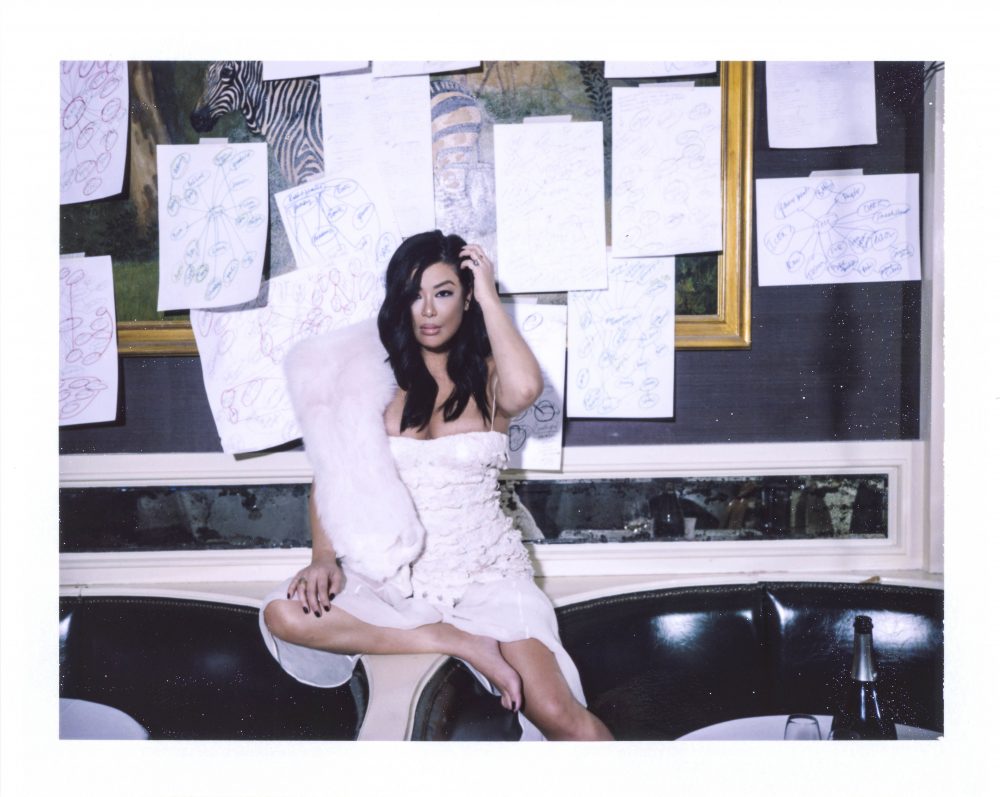Let’s get a few things straight. Angie Mar, co-owner and chef of the Beatrice Inn, loves whiskey-aged beef, is angered by great food and prefers to eat dinner with her bare hands.
On this week’s episode of Milk Street Radio, Mar, who recently authored Butcher and Beast: Mastering the Art of Meat: A Cookbook, gives us a snapshot into her world from bone-marrow bourbon crème brûlée to a $700 tomahawk rib-eye steak. Get an extended look at our interview from the excerpts below, and listen to her full conversation with Christopher Kimball here.
On the history of the Beatrice Inn
Through the years, it’s been this gathering spot for so many New York characters and luminaries. The building was built in 1871, and it was one of New York’s first speakeasies. It’s been the Beatrice Inn since the 1920s, so it’s got a long-storied and tumultuous past. Zelda and F. Scott Fitzgerald and Ernest Hemingway used to drink there in the '20s. It was an Italian restaurant for over 50 years, and the American tap dancer Paul Draper would go have the veal Milanese and then get on top of the tables and tap-dance for the guests. Then it turned into a nightclub. It was owned by Paul Sevigny and Matt Abramcyk for all the “it” girls and models. I was never cool enough to get in, so I bought it.
The interesting part about it is I didn’t want to buy the Beatrice Inn, but how often do you get the chance to buy a piece of New York history? The answer is very far and few between, so we took the leap.
On finding her cooking identity
If you had asked me in 2016 what my food was, what I cooked, what it represented or what it meant I couldn’t articulate it, but I could cook it. After my Pete Wells review, it gave me the confidence to be who I was in the kitchen and cook the food that I was passionate about. He wrote that review at that time I was getting into who I was as a cook and a creative chef. I was growing into my own. He understood that there’s cooking that makes you think, and there’s also cooking that makes you feel. I want it to take you back to those primal instincts where it’s just me and fire. That’s the experience I want to give to everybody when they come into the Bea.
On bone-marrow crème brûlée
When I had my very first James Beard dinner, I smuggled in all this beef from all over the world. I’m thinking, “OK, if I’m making an all-beef dinner, I’ve got to come up with a dessert with beef.”
So, I make a bone-marrow bourbon crème brûlée, and it’s delicious, but for two months I don’t show it to anybody, and I don’t cook it for anybody. When we finally had the dinner with all the illegal beef we smuggled in, nobody cared about the meat because they were just so obsessed with the crème brûlée. It’s been a signature on our menu ever since.
On the $700 tomahawk rib-eye steak
The whiskey aging technique is a technique I picked up in Paris from a butcher by the name of Yves-Marie Le Bourdonnec, and I think he is just genius. We take whole sides of beef and wrap them in cloths that have been soaked with a French single-malt whiskey. It sits, and we change out the cloths and resoak them over 160 days. The youngest steak that we have on my menu is 60 days, so it’s our entry-level steak—because it’s not that common to take steaks this long, but I like that like really distinctive beefy, funky quality to it. For me, 160 days with this whiskey-aging process just kind of hits the mark.
It’s interesting because we don’t make any money off of it. It’s a pure vanity project for me to have fun with because it’s a dish that nobody had ever done before, so why wouldn’t we do it? This steak is one of the most polarizing plates in the industry, and I love that because I love being polarizing. It makes me very happy. If everybody loved what we did, then we’d be mediocre. We’ve got to create waves because that’s how you know you’re doing something new. Some people really understood the technique, and there are people, you know, that completely villainize me for it.
On why food should make you emotional
I think the world is divided into two different types of people: People that eat to live and people that live to eat. For me, everything—so many of my memories and my ideas—start around a dinner table. It all starts with good food, and food should elicit emotions. Some people can cook, and maybe the ingredients are perfect; it’s seasoned perfectly, and it’s plated perfectly, but there’s a difference between that and food that’s cooked with soul and depth. When you eat it and know whoever made it poured love into the food, because I can feel it, and I can taste it. As a creator and as a cook, there’s food that I eat that pisses me off—because I’m so angry I didn’t think of it because it's so good. That’s the feeling that I’m always chasing.
On why it’s OK to eat with your hands
If you ever come to the Beatrice Inn and catch me on a night where I’m not in the kitchen, I might be eating in the dining room, and I don’t use utensils. I’m so savage. I’ll sit in my dining room, and I’ll eat a rabbit with my hands, and that’s what it is. As a creative, we like to feel things, and we’ve got to get in there. Eating is a sensory thing, so it’s crucial for me to feel it.
I’ll never forget how growing up, my mom used to say, “You’ve got to eat with your fork and knife.” And I just wanted to eat with my hands. You grow up with this notion that we’ve got to be proper, and you can’t pick it up by the bone when you’re in a restaurant. All those rules go out the window when you get to the Beatrice. If you don’t have a rib-eye bone in your hand by the end of your meal, then you’re not eating in my restaurant right.
On family
The Beatrice Inn is a family. You have restaurants where you eat a family meal every day, and it’s just crap pasta or something to fill you up, or they grab some food and shovel it down at their station while there prepping for service. I know because I grew up in that type of kitchen, and that’s not what I ever want in my restaurant.
We’re required to make a great family meal every day. We all sit down on one long table in the restaurant at 4 o' clock every single day. The front of the house, back of the house, dishwashers, hostesses or managers—it does not matter. Everyone sits at the same table every day, and we enjoy a meal together. I think it is fundamental to the health of any restaurant. It starts there.
This interview has been edited for clarity.
Join the conversation on Facebook, Twitter, Instagram and Pinterest.
Stay up to date on free recipes, new radio episodes, classes, events and more with our newsletter. Sign up here.
The co-owner and chef of the Beatrice Inn invites us into her world on Milk Street Radio.



